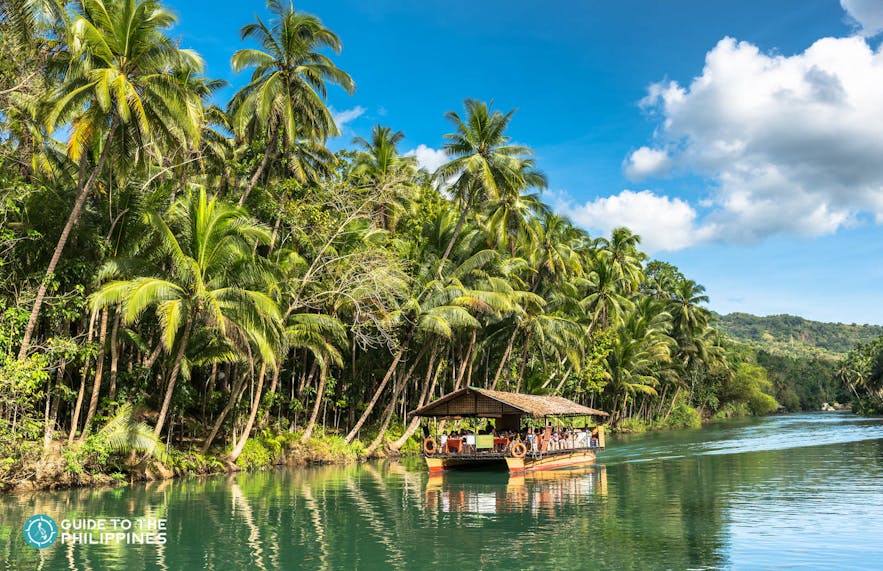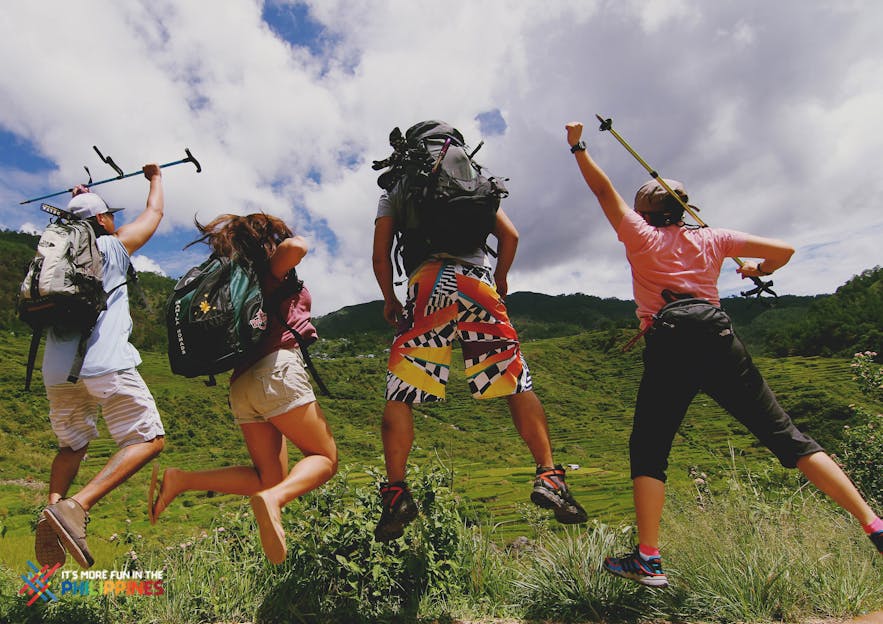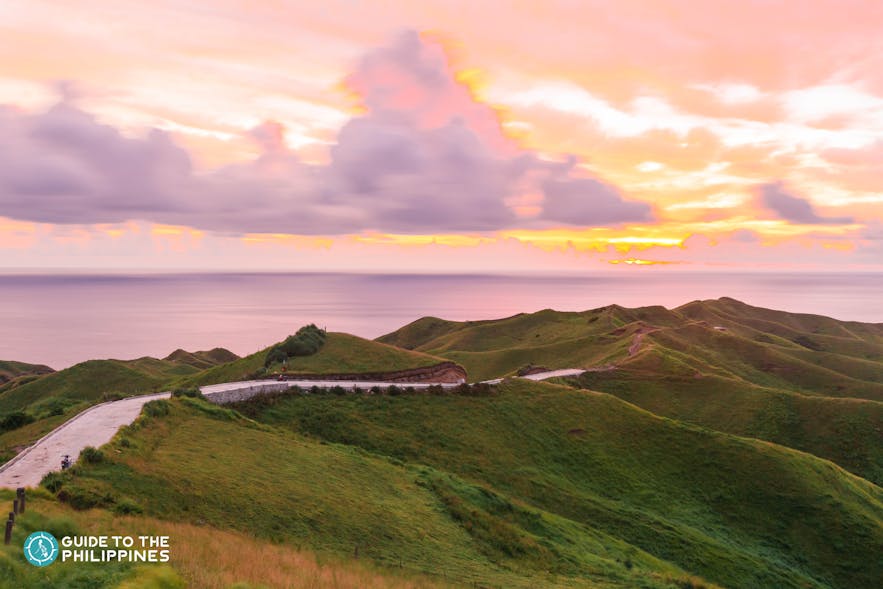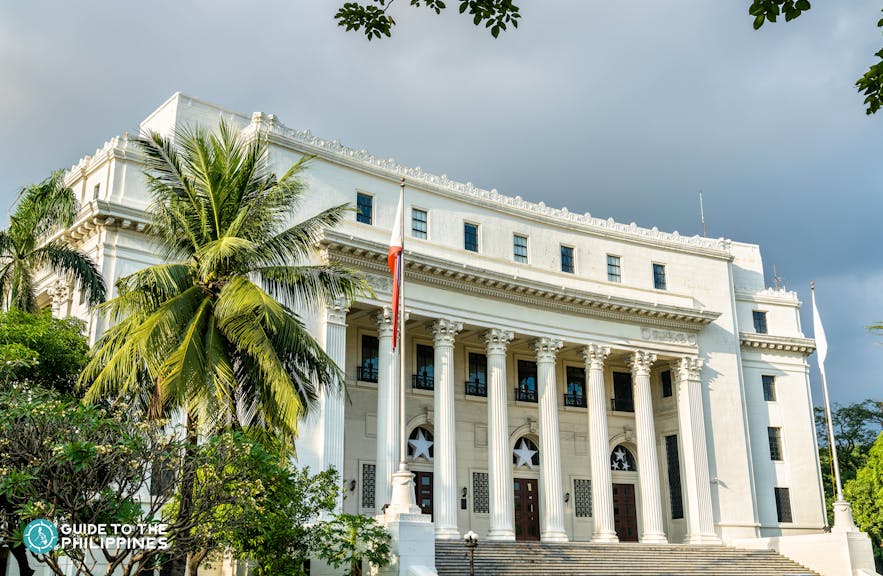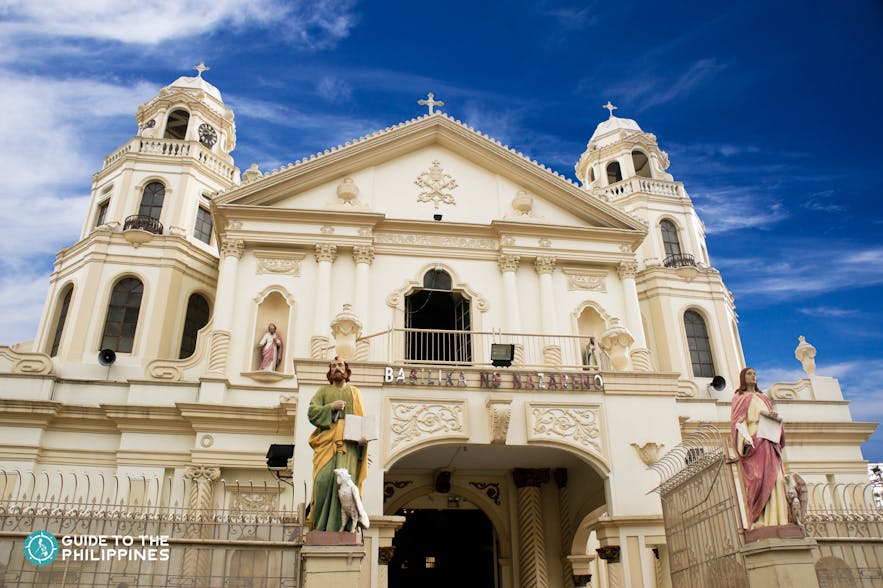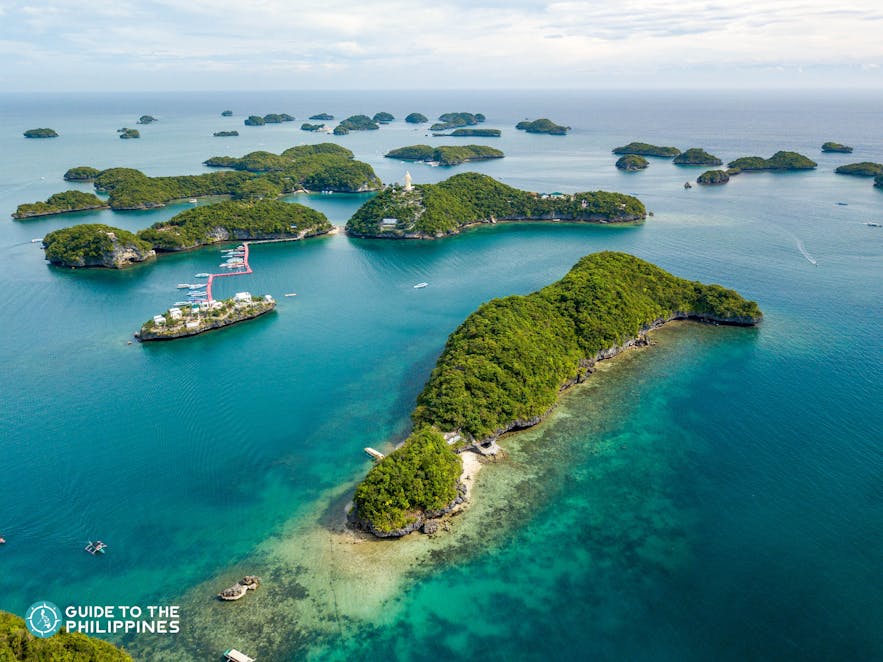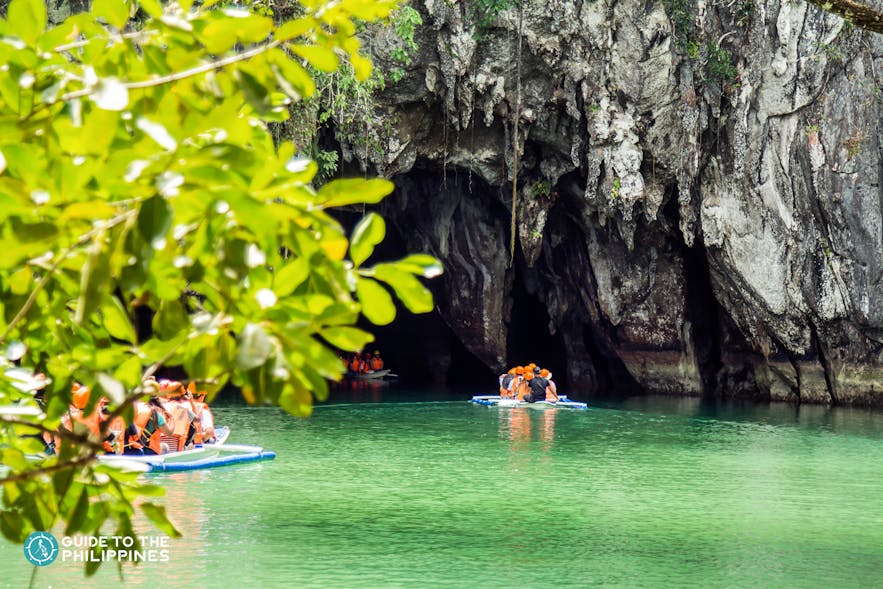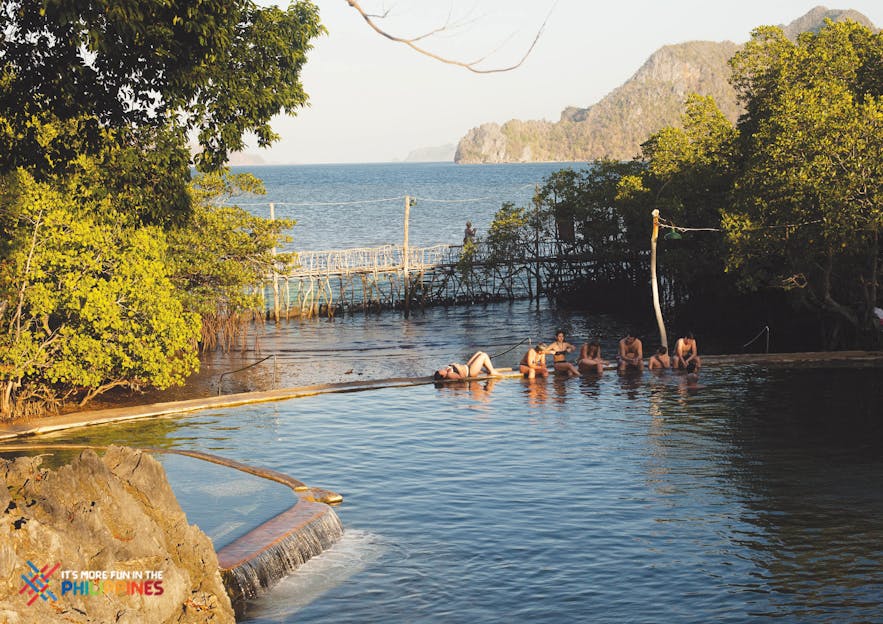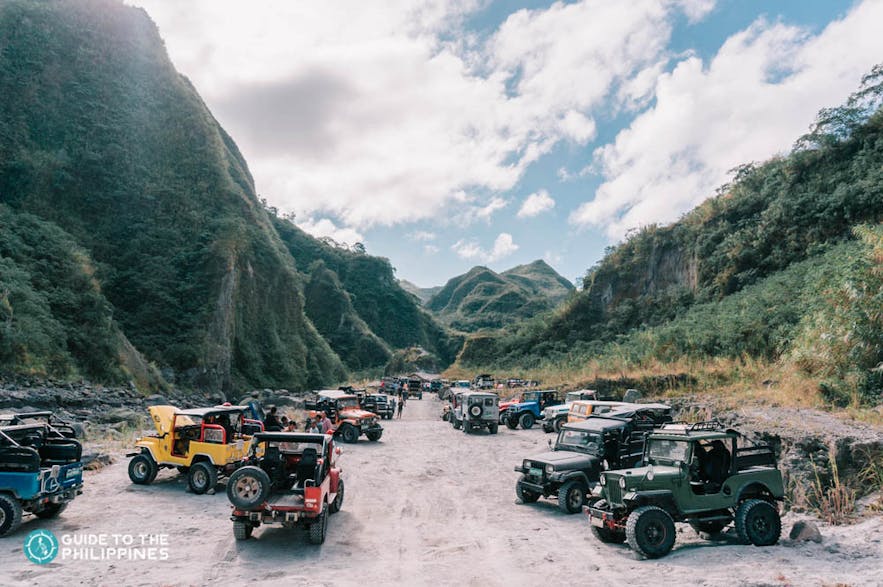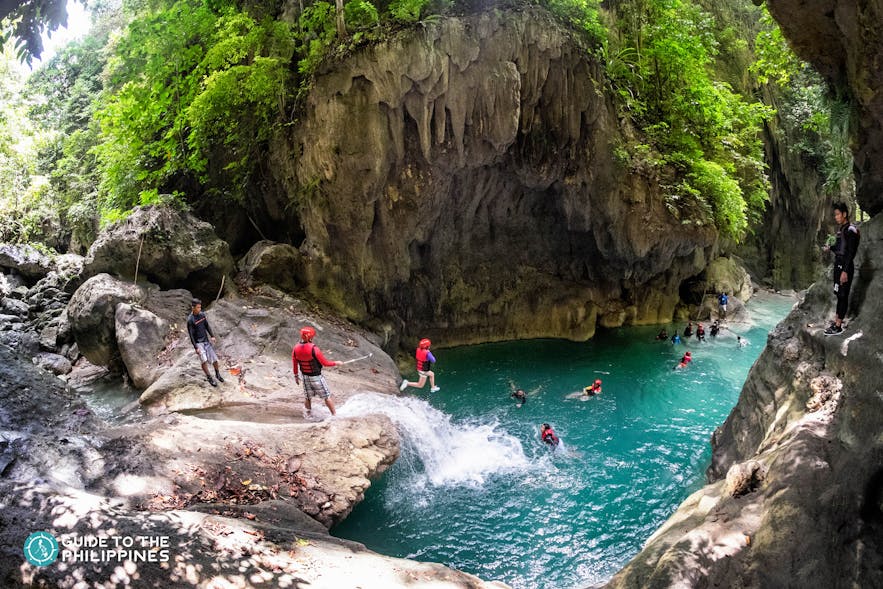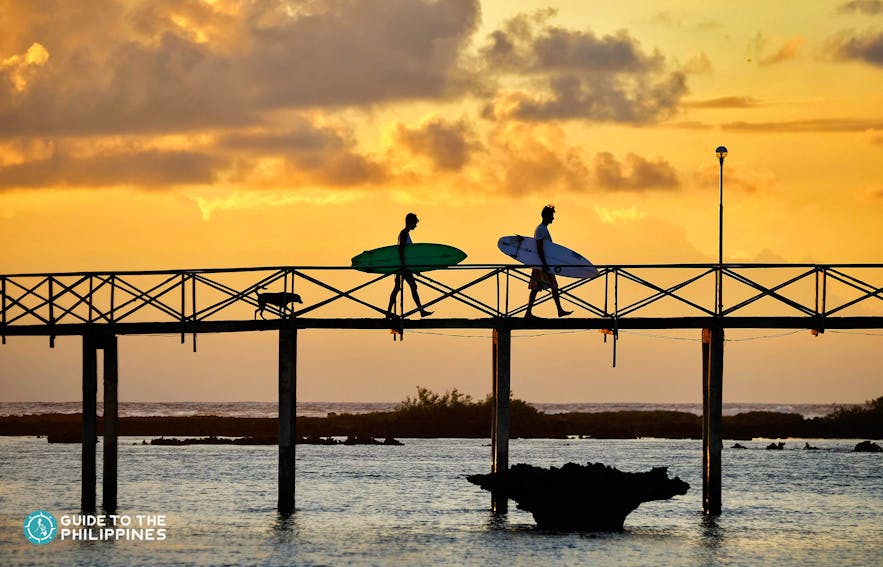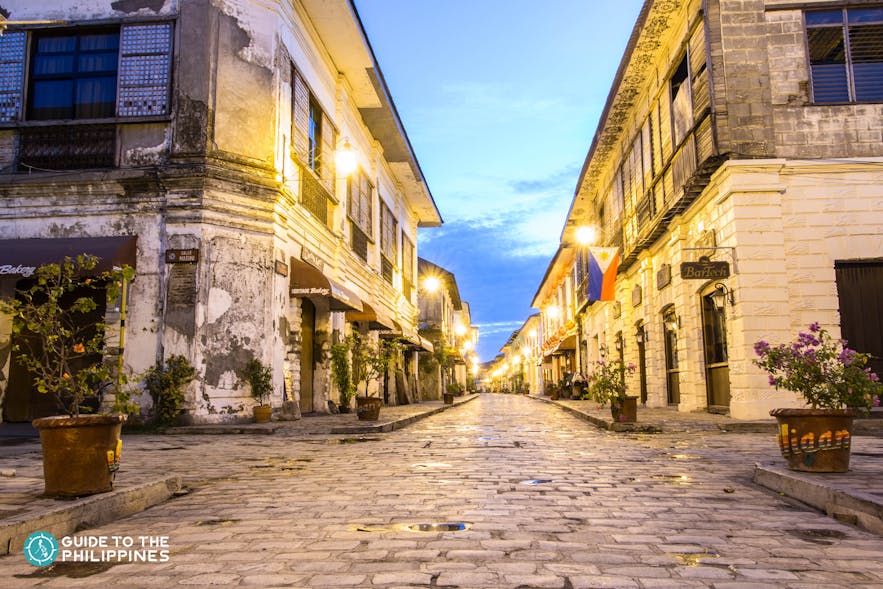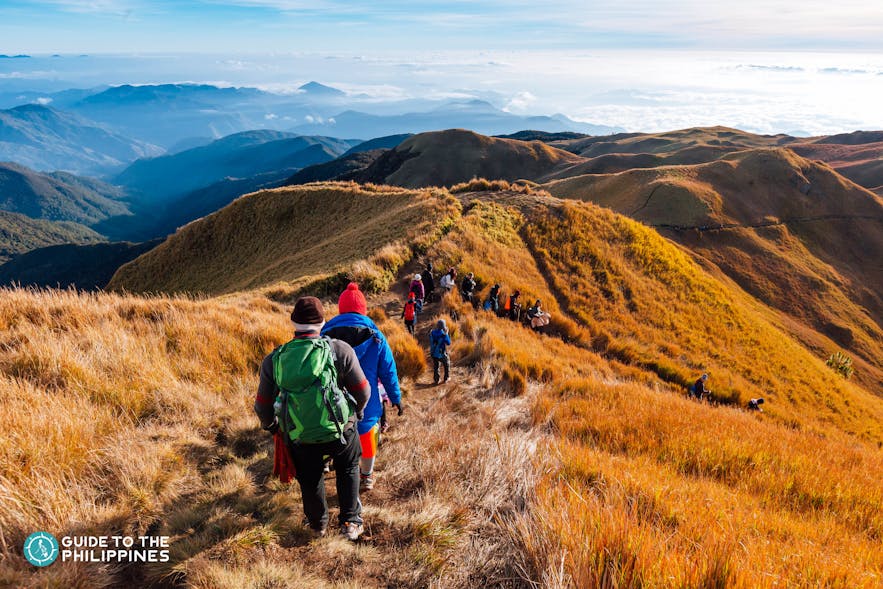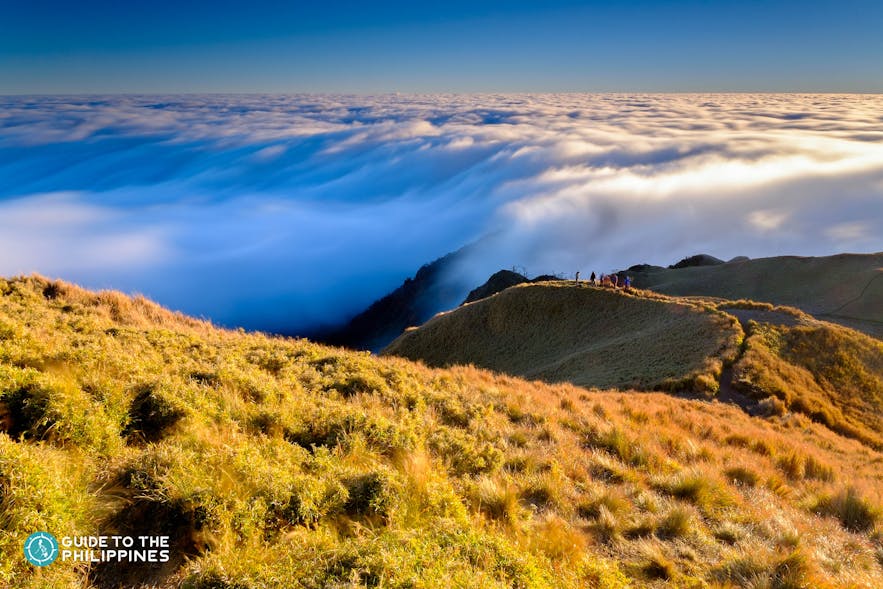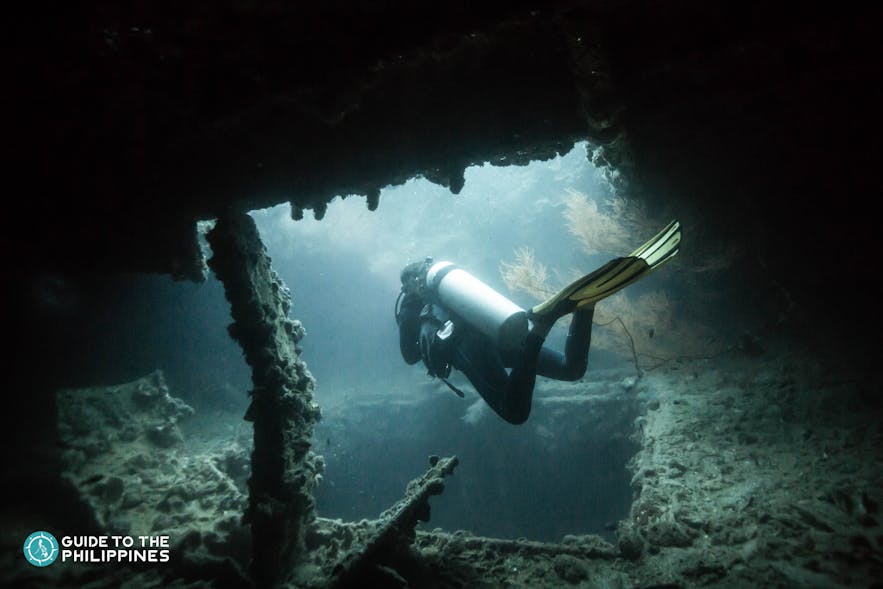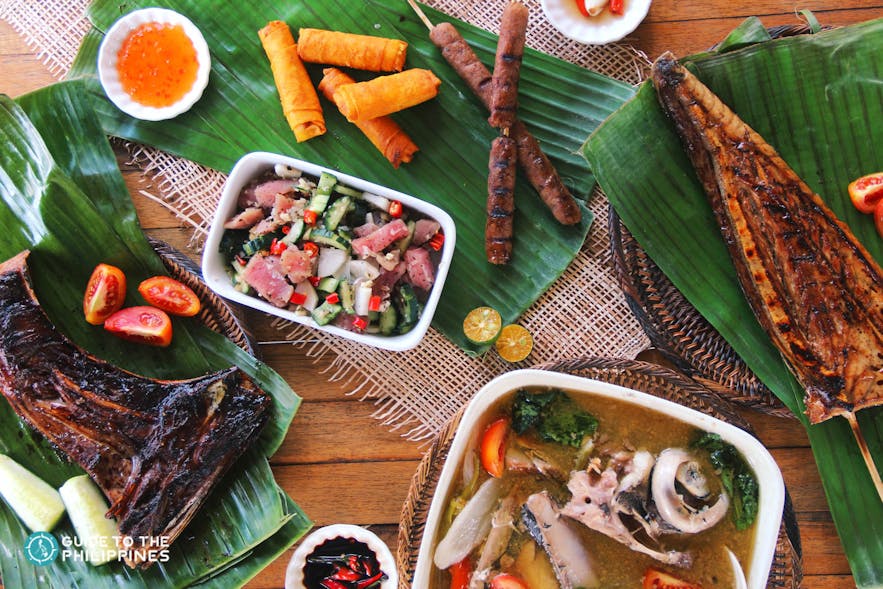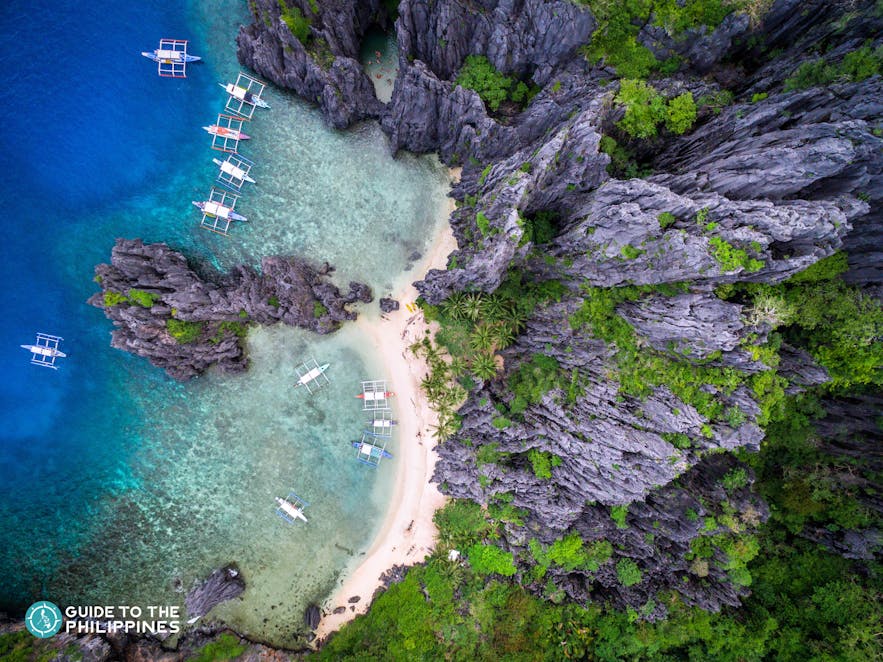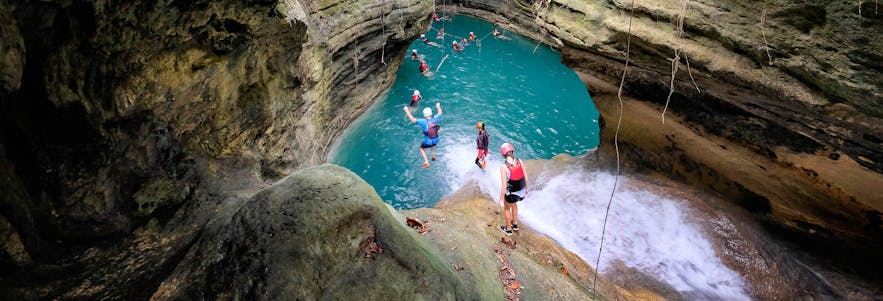 With over 7000 islands to explore and discover, the Philippines is packed with exciting activities and incredible tourist spots to explore. Find out what are the best and must-try things to do in the Philippines in this article and plan the ultimate bucket list itinerary.
With over 7000 islands to explore and discover, the Philippines is packed with exciting activities and incredible tourist spots to explore. Find out what are the best and must-try things to do in the Philippines in this article and plan the ultimate bucket list itinerary.
As a holiday destination, the
Philippines boasts of unique experiences and exciting adventures wherever you go. Through the years, it has become known as one of the most popular tropical hideaways in the world - making it the go-to place for adventure seekers, food lovers, thrill chasers, and everyone who wishes to satisfy their wanderlust.
The Philippines is divided into three island groups: Luzon, Visayas, and Mindanao. From North to South, there’s so much to see and do around the country that fits whatever type of traveler you may be. It’s jampacked with diverse activities, unforgettable escapades, and even laid-back relaxing experiences that can truly spark your joy.
From the world-renowned island paradise like
Palawan and
Boracay to
Cebu’s rich history to
Siargao’s magical island vibe and surfing oasis – the Philippines will never fail to amaze you.
Photo by the Philippine Department of Tourism
Apart from its natural beauty, the locals' hospitality will make you fall in love more with this beautiful country. Filipinos are known for their friendliness and their ability to see light and humor in every situation – may it be good or bad.
There’s an endless list of reasons to visit the Philippines. To make sure that you won’t find yourself saying “So many things to do, so little time”, here are some of the top activities that you should add to your itinerary:
20. Join Sightseeing Tours
You don't have to try extreme activities to enjoy the best of the Philippines. The country is filled with
beautiful tourist spots that can be enjoyed by anyone regardless of age and physical condition. All you need are your eyes to see why the Philippines is one of the favorite travel destinations of travelers.
19. Visit Museums
With the Philippines’ rich heritage and culture, museums serve as a venue for people, young and old alike, to get in touch with the country’s history.
If you're in Manila, no need to travel far since there are a couple of
museum tours worth checking out which includes Metropolitan Museum of Manila, The National Art Gallery at the
National Museum of the Philippines, Calvo Museum and the Casa Manila Museum in Intramuros.
For those who would like to do a day trip, the well-known
Las Casas Filipinas de Acuzar in Bataan is another place where you’ll surely be transported back in time.
Other must-visit museums outside the metro are Balay Negrense Museum in Silay, Negros Occidental, Palawan Special Battalion WW2 Memorial Museum, Museum Sugbo in Cebu and Davao Museum of History and Ethnography in Mindanao.
18. Go on a Pilgrimage Tour
Religion is an integral part of every Filipino’s spiritual journey. For some, pilgrimage is part of a “panata” or vow for petitions or a way to give thanks for an answered prayer.
Pilgrims usually involve visiting several churches, basilicas, and shrines for they believe that the penance comes in the journey itself and that reaching the main church or destination would mean spiritual awakening and new beginning.
Through the years, people from all walks of life has joined
religious pilgrimages around the country’s miraculous churches and places.
Some famous pilgrimage destinations include St. John the Baptist Parish Church in Quiapo, Cebu’s Simala Shrine, Minor Basilica of the Our Lady of the Most Holy Rosary in Manaoag, San Pascual de Baylon Parish Church in Obando, Bulacan, Baclaran’s National Shrine of Our Lady of Perpetual Help and Pink Sister’s Convent in Tagaytay.
17. Discover Wakeboarding
An activity that’s not known to many but has been gaining consistent popularity in the Philippines,
wakeboarding tours have also started to become a go-to adventure to many. There are no age restrictions when it comes to learning this water sport if you know the basics of swimming.
Camarines Sur is the wakeboarding capital of the Philippines due to the success of the 2009 WWA Ultimate Wakeboard Championships held at CamSur Water Sports Complex.
Lago de Oro in Batangas is also perfect for a quick getaway with family and friends since it’s just two-hour drive from Manila. Like Batangas, Republ1c Wakepark in Nuvali is also a great option for a weekender to enjoy wakeboarding.
Last but not least is
DECA Wakeboard Park which is dubbed as the largest wakeboarding park in Southeast Asia and is just a 30-minute drive away from Davao City International Airport.
16. Explore Nature at National Parks
Among all other outdoor activities, the Philippines is also a haven for nature lovers and wildlife enthusiasts. With its innumerable national parks, there’s plenty of spots to explore and discover.
Ranking high on the list is a
tour to Hundred Islands National Park which is perfect for family outing and nature tripping as you marvel at the exquisite beauty of more than a hundred mushroom-like islands in front of you.
Another crowd favorite is the Caramoan Peninsula National Park with its serene view of white sand beaches, sparkling rivers and magnificent limestones – a sure treat for all nature admirers out there.
Meanwhile, for those that enjoy wildlife spotting, a
tour in Calauit Safari Park in Palawan is surely the experience to go. Apart from being home to hundreds of giraffes, the place also boasts of diverse flora and fauna for you to witness and truly appreciate.
15. Experience River Tubing
Get wet and wild! River tubing is surely set to give you a heart-pumping experience as you go through the rapids of the river by riding the interior of big tires or commonly referred to as the tube.
Somehow similar to water rafting, the main goal is to not fall off the tube until you’re able to conquer all the possible rapids before the main destination.
Pangi River in New La Union and Maitum in Sarangani Province are where the water tubing action is. Check out
river trips for a more complete experience.
14. Join Boat Tours or River Cruises
Puerto Princesa's Underground River or Subterranean River National Park has been granted the UNESCO World Heritage award due to its spectacular limestone and awe-inspiring landscape with an underground river. By joining
boat tours, you get to see up close the longest navigable underground river in the world.
Likewise, Ihawig River in Puerto Princesa offers an enthralling river cruise experience at night. Imagine staring at the beauty of the night sky and breathing in the cold breeze as you cruise. If that’s not enough to melt your heart, you’ll also be treated with a magical light show of fireflies that look like dancing stars.
13. Caving and Spelunking
Enchanting, captivating, and exciting – just some of the words that come to mind to best describe the experience in some of the Philippines must-visit
caving tour sites.
Samar is known to be the Caving Capital of the Philippines as it houses the Sohoton Caves and Natural Bridge Park which features picturesque caves, subterranean rivers, and limestone formations.
On the other hand, a tour in Callao Cave which is located in the province of Cagayan offers 300 cave systems that will let you see the grand attraction of huge limestones and rock formations.
Hinagdanan Cave tours in Bohol will also reward you with unexplored beauty as remarkable stalagmites and the cave’s striking beauty welcome you upon entering the site.
12. Relax in Natural Hot Springs
Photo by the Philippine Department of Tourism
Located in Camiguin, Ardent Hot Spring has been a main tourist attraction in the area as it is also found on the foot of Mt. Hibok-Hibok, an active volcano that supplies the hot spring water.
The
Puning Hot Springs tour in Pampanga is also a crowd favorite. It has a total of eight pools of hot water ranging from 40 degrees and up which is downright soothing especially after a whole day of adventure.
Known to also be therapeutic, these places are also good venues if you’re looking for a trip that’s equal parts adventure and rejuvenation.
11. Try 4x4 ATV Rides
This activity will definitely take your adventure junkie self a notch. This isn’t your typical boring theme park ride because
ATV tours take you off the beaten path.
A trip to Mt. Balabag will transport you into an instant action scene. Due to its wide and nearly flat trail, it’s possible for you to take your 4x4 truck all the way to the summit and submerge it in the water as you cross the rivers.
An off-road
4x4 ride to Puning Hot Springs in Angeles, Pampanga should also be on every explorer’s bucket list. Imagine passing through rocks, mountains, and running over the puddles of water with a gorgeous view to excite your senses more.
You will be amazed knowing that this natural creation was formed after the eruption of Mt. Pinatubo.
10. Try Canyoneering
For adrenaline junkies who want to try something different, canyoneering or canyoning is surely making waves. If you’re looking for an extra dose of outdoor fun and adventure where you get to enjoy the verdant, natural scenery, and test your limits, then you must try
canyoneering tours.
A
tour to Kawasan Falls in Cebu is the ultimate must-do for travelers who want to experience the thrill and excitement of canyoneering due to its stunningly clear waters and picturesque canyons.
Some of the other recommended places to explore are Mt. Isarog National Park in Camarines Sur, Bangon Falls in Samar, and Sampao River in Biliran.
9. Go Surfing and Ride the Best Waves
The
Philippines' surfing spots have grown more and more popular in recent years.
Cloud 9 tours in Siargao Island, without a shadow of doubt, has become one of the word’s sought-after surfing destinations and activity.
It has surf breaks and spots for different levels – whether you’re a newbie who wants to catch your first wave or a professional who wants to take your surfing skills to new heights. Not to mention that the island’s inexplicable charm has caught the attention of tourists all over the world.
La Union and Baler may also ring a bell when it comes to surfing as they are more accessible if you’re living in Luzon.
Both have taken their spots in the hearts of the surfing community with their laidback island vibe, friendly locals and impressive waves that will surely leave you stoked for days.
8. Immerse in Historical and Heritage Tours
What better way for tourists to truly appreciate the beauty and magic of the Philippines than to immerse into its rich culture and heritage. Be transported back to the historical era of the country’s past and quest for freedom when you try
heritage excursions.
Reading the Philippine’s history in books is good, but it’s so much better to relive it by visiting the actual historical spots where they all happened.
A
trip to Corregidor will surely transport you back in time where the epic Battle of Corregidor took place during the last world war.
The Rice Terraces of the Philippine Cordilleras in Ifugao, the Historic Town of
Vigan, San Agustin Church in
Intramuros, Paoay Church in Ilocos Norte and Miag-ao Church in Iloilo will surely awaken your curiosity and fascination of the events that molded the country’s history.
7. Go Hiking in the Best Mountains
A holiday doesn’t always have to be all about the beach or pool. For thrill-seekers who are after action and adventures, Philippines has a little bit of everything for everyone. Beyond its numerous islands, the country is also gifted with varied terrains and impressive mountain ranges.
Pack your bags, put on your hiking shoes and escape the bustling city by
hiking in the Philippines. The Philippines is famed for a long list of breathtaking hiking trails, catering to all levels of difficulty.
Popular among amateur hikers is Mt. Batulao which is just a few hours from Metro Manila. If you want to unwind amongst wonderful, easy-to-access scenery then this is the perfect choice for you.
Hiking Tarak Ridge in Mariveles is a bit more challenging but will surely be worth it once you’re soaking up the great views of Bataan, Manila Bay, and its surrounding islands.
Last but not least is the famed Mt. Pulag which is the highest peak in Luzon. Being at the summit of Mt. Pulag, standing above a sea of clouds, is another mind-blowing experience.
If you’re lucky to see it during sunset, these clouds seem to catch fire in the afterglow – such an awe-inspiring view that’s marked in your mind forever.
6. Plunge into Majestic Waterfalls
More than the sun, sand and sea - there are also a lot of hidden gems in the form of waterfalls tucked in some of the country’s most famous tourist spots. Some may require a bit of hiking to reach but their unique charm and history will truly make the journey worth your while.
Natural beauties such as Kawasan Falls in Cebu, Ditumabo Falls (also known as Mother Falls) in Baler, Cambugahay Falls in Siquijor, and Aliwagwag Falls in Davao Oriental top the list of most sought-after attractions included in
waterfalls tours.
You will not just find yourself chasing them, you’ll surely fall for them too.
5. Diving and Snorkeling in Incredible Underwater Spots
There’s something magical about discovering the underwater world. It’s like experiencing a whole new part of the planet we live in. A place where you can co-exist with the living creatures of the ocean and where you are one with them.
With thousands of islands, the Philippines promises to spoil you with a lot of choices for your
diving adventures. Mindoro ranks high as it has a huge variety of dive sites that offer the ideal dive for every skill level.
Coron offers a unique diving experience as it will not only amaze you with its natural beauty but will intrigue you with its wreck areas’ history. Some other must-visit for your under the sea escapades are Isla Verde in Batangas and Balicasag Island in Bohol.
4. Join Food Tours to Try Philippine Cuisine
Is your trip really complete without tasting the best local cuisines in the country? The Philippines has a lot of luscious and mouth-watering dishes that’s guaranteed to satiate your cravings and take your experience to the next level.
There’s no better way to experience the
Philippines' gastronomic scene that to eat like a local. Fortunately, there are several
food tours that offer you the chance to have a bite of history and the life from each of the regions where they come from.
Be ready to feast over not just the most authentic, homemade delicacies in the country but also over the fascinating tales of the various hometowns. You’re in for a serious food coma (in a good way) when you join food experiences.
3. Dance in Colorful Festivals
Filipinos are known for their happy and optimistic nature. They always find reasons to celebrate
colorful festivals, also known as “fiestas,” which have been a part of the Filipino culture through the years.
Part of the Philippines' culture is its known respect to religion which is evident in the celebration of various patron saints though the whole country.
Sinulog Festival in Cebu is one of the most popular Catholic festivals. Tourists from different parts of the world join the festivity to witness its street parties, native dances and colorful costumes.
Another most celebrated festival is The Feast of the Black Nazarene which takes place on the 9th of January every year in Manila, attended by thousands of devotees who believe that the Black Nazarene is miraculous.
Other well-known festivals include
MassKara Festival in Bacolod, Moriones Festival in Marinduque, Panagbenga Flower Festival, Pintados-Kasadyaan Festival of Festivals in Leyte, Davao’s
Kadayawan Festival and Kalibo’s Ati-Atihan.
2. Lounge at the Best Beaches
The Philippines has the 5th largest coastline in the world. This coastline stretches thousands of miles dotted with a multitude of
beautiful beaches, making it a slice of heaven for all sun and sand lovers. Its beaches are also consistently included in lists for the best beaches in the world in international publications.
If you're looking for the most idyllic unspoiled beaches with crystal clear waters for a relaxing getaway, the Philippines has to be on top of your list.
Must-add beaches in your list should include the famous
White Beach of Boracay, Nacpan Beach of El Nido in Palawan, Alona Beach of Bohol, and Long Beach (the longest beach in the Philippines) in San Vicente, Palawan.
1. Join Island Hopping Tours
Its islands are what makes the Philippines the ultimate dream destination. As a tropical archipelago, the Philippines doesn’t disappoint when it comes to pristine postcard-worthy islands. The islands of the Philippines are recognized worldwide as some of the best in the world, with
Palawan consistently earning the number 1 spot for years.
Island hopping tours are a must-add in any Philippine itinerary. These are usually done on a full day where you visit at least 2-3 islands. Some tours can even take you to as much as 5-7 islands in a day. Now that's an island lovers' dream getaway.
You'll get to visit islands with powdery white sand underneath your feet, with the salty air kissing your face as you savor the clear blue water surrounding you. It’s like a scene in a movie where you’re in an unbelievably beautiful island, but instead of just one, you get to experience this in different islands that each offers a unique beauty.
Top island hopping destinations in the Philippines include Palawan's El Nido and Coron, Cebu, Bohol, Siargao, Boracay, and Bohol to name a few. But wherever you are in the Philippines, as long as you're near the ocean, you're sure to find islands to explore. These will surely take your breath away and will leave you speechless and ignite your dream of living the island life.
Plan Your Ultimate Philippines Holiday
There’s a lot to love about the Philippines and there are plenty of reasons to keep coming back for more. From island hopping to diving and snorkeling in crystal clear waters to experiencing its rich culture and history, you will surely find something to make your traveler’s heart skip a beat.
Exploring this country is like meeting a potential lover. It intrigues you; it piques your interest and as you get to discover more about it, the more you’ll fall in love with it.
Discover and explore what this country has to offer by checking out Philippines tours and activities that will surely make you fall with the Pearl of the Orient Seas!
.webp)
.webp)









 With over 7000 islands to explore and discover, the Philippines is packed with exciting activities and incredible tourist spots to explore. Find out what are the best and must-try things to do in the Philippines in this article and plan the ultimate bucket list itinerary.
With over 7000 islands to explore and discover, the Philippines is packed with exciting activities and incredible tourist spots to explore. Find out what are the best and must-try things to do in the Philippines in this article and plan the ultimate bucket list itinerary. 